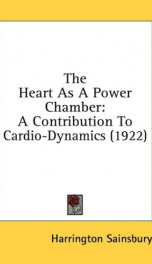principia therapeutica

Purchase of this book includes free trial access to www.million-books.com where you can read more than a million books for free. This is an OCR edition with typos. Excerpt from book: CHAPTER III BALANCE PHYSIOLOGICAL AND PATHOLOGICAL PART II " Concordid res parvce crescunt." T N the mechanics of the circulation we have - observed powers of self-adjustment constituting a balance of great stability, the need for which will doubtless have been its raison d'etre, since, unlike certain other systems now to be considered, the circulatory system stands alone, no other organ or organs being able to assist actively, or supplement, its deficiencies. In marked contrast stand those other systems whose functions, secretory, excretory, form part of the complex chemistry of the tissues. To theif correlation we would now draw attention, and in the affinities which the renal system bears to other eliminating organs, we are furnished with the specific instance we need. In Dr. Strange's case already quoted,1 both ' See p. 5. kidneys appeared to have been entirely destroyed, no trace of renal tissue being discernible in the two membranous sacs which took their place : this patient attained to the age of eighteen. The case, as already stated, is by no means isolated, being paralleled by some examples of extreme cystic degeneration, in which the evidence is also clear that the kidney destruction in its extreme degree must have long existed. Three possible interpretations arise at once, viz. : I. That the spoiled organs are still capable of an adequate renal function ; II. That the renal function is not vital to the economy ; III. That other tissues and organs can take up and so replace the lost renal powers. The first hypothesis may be dismissed forthwith, it is a reductio ad absurdum of the relation between structure and function. The second is negatived by all our observations of disease, which establish beyond controversy the vital importance of...
Info about the book
Author:
Series:
Unknown
ISBN:
1245083562
Rating:
4.5/5 (4)Your rating:
0/5
Languge:
English
Users who have this book
Users who want this book
What readers are saying
What do you think? Write your own comment on this book!
write a commentif you like principia therapeutica try:
Other books by this author
Do you want to read a book that interests you? It’s EASY!
Create an account and send a request for reading to other users on the Webpage of the book!



